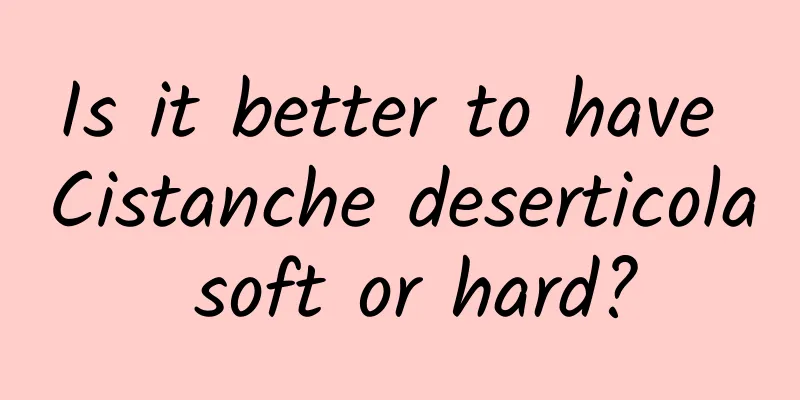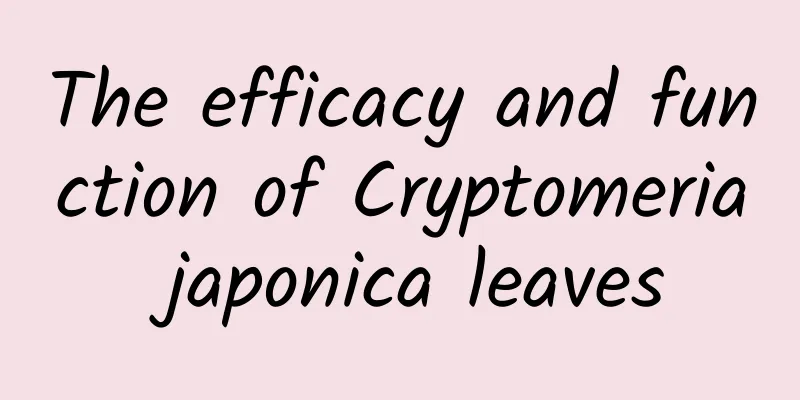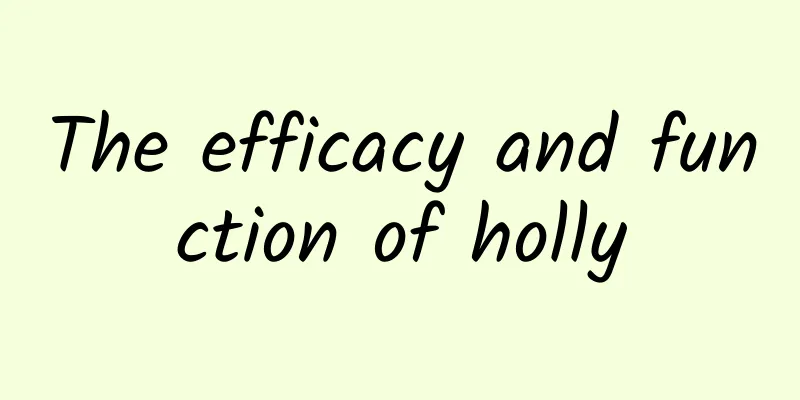Is it better to have Cistanche deserticola soft or hard?

|
Many people have never heard of Cistanche, nor do they know what it is. In fact, Cistanche is a traditional Chinese medicine, and it is a precious type of Chinese medicine. The Cistanche sold on the market is very expensive, and its price is also affected by quality, year, etc. It is very good for the body after consumption. Patients should carefully select Cistanche to avoid the efficacy of the drug being affected by various factors. So is it better for Cistanche to be soft or hard? In order to find the answer to this question, please follow us to read the following article. It is known as the "desert ginseng" and has extremely high medicinal value. It is a traditional precious Chinese medicinal material. Cistanche deserticola is sweet in taste and warm in nature. It has the effects of nourishing the kidney and strengthening yang, replenishing essence and marrow, nourishing blood and moistening dryness, improving complexion and prolonging life. Cistanche can be used as both medicine and food. Long-term consumption can increase physical strength, enhance endurance and resist fatigue. It can also enhance the sexual ability and fertility of humans and animals. In history, Cistanche deserticola has been regarded as a precious tribute to the imperial court by the Western Regions. It is also one of the most frequently used tonic medicines in kidney-tonifying and yang-strengthening prescriptions throughout the ages. An endangered species. There are two types of Cistanche deserticola. One is Haloxylon ammodendron, also known as soft Haloxylon, which is mainly distributed in Alxa Banner and other places in western Inner Mongolia. One is the red willow dayun, also known as hard dayun. The scientific name is Cistanche tubulosa. Mainly produced in Xinjiang. Among them, Haloxylon ammodendron is of superior quality. Because of the difference in texture, Cynomorium songaricum can only be used to impersonate the inferior quality Hard Dayun. Because of its soft texture, soft Dayun is difficult to imitate. Although it is slightly expensive, it is also the first choice for nourishing the kidney and improving yang. Cross section of stem: The epidermis is a row of flat cells covered with a cuticle. The cortex is composed of dozens of rows of thin-walled cells, which are arranged tightly. The cells near the vascular bundles have pits and there are scattered leaf-mark vascular bundles. The vascular bundles are tough, usually 16-22 in number, arranged in deep wavy or serrated rings. The phloem thin-walled cells are arranged closely and sometimes become decadent. The cambium is not very obvious. Non-lignified fibers can be seen in the xylem. The rays are obvious. The medulla is multi-fractal. The thin-walled cells of the cortex and medulla contain starch granules. Cross section of scale leaf: There is one row of upper and lower epidermal cells, which are flat and rectangular and covered with a thin cuticle. Hypodermal cells in 1 row, slightly larger. The mesophyll tissue is all spongy tissue, the cells are round, thin-walled, contain chloroplasts, and have small intercellular spaces. Vascular bundles 5-7, exo-tendonic, arranged tangentially. The fleshy stem is oblong or slightly flattened at the bottom, slightly curved, 3-375px long, thicker at the bottom, and 5-375px in diameter. Gradually tapering upwards, with a diameter of 2-375px. The surface is gray-brown or tan, densely covered with fleshy scales arranged in a shingle-like pattern. The scales are diamond or triangular, about 5px thick and 0.5-37.5px wide. It can be seen that the leaf marks left after the scales fall off are crescent-shaped. It is hard and not easy to break. The cross section is brown, with light brown dot-like vascular bundles and deep wavy or serrated rings. The woody part accounts for about 4/5 and is sometimes hollow. Small crystalline bright spots can be seen on the surface and cross section under bright light. Traditionally, it is believed that the best ones are those with fat, dark brown, oily and soft texture. Is it better to have soft or hard Cistanche? In fact, both soft and hard Cistanche are very good. It’s just that the types of Cistanche are different, and the medicinal properties are the same. Just be aware that hard Cistanche is prone to counterfeit drugs, and it is also easier for people to not distinguish them in time, so soft Cistanche is an easy choice for everyone. When choosing Cistanche, be sure to go to a regular pharmacy or hospital. Don't buy it casually, as you may be deceived and buy counterfeit drugs. |
<<: What is the medicinal value of Morinda officinalis
>>: What are the uses of Cistanche deserticola?
Recommend
The effects and functions of clove root
Clove root is a very common medicinal material in...
These two male humpback whales, what are you doing | Nature Trumpet
Welcome to the 54th issue of the Nature Trumpet c...
China will launch the "Einstein Probe Satellite" to survey and locate black holes in the universe
Recently, the Chinese Academy of Sciences announc...
Congratulations! my country successfully launched the test satellite No. 20C
At 9:01 am on October 29, my country successfully...
Many people dream of traveling through time. After watching the conflicting film "The Tomorrow War," you'll know how absurd it is.
The so-called time travel is to travel from one t...
Progesterone side effects
Progesterone, also known as progesterone, is main...
This can’t be eaten, that can’t be eaten, what exactly are the “irritating foods” that Chinese medicine talks about?
"You can't eat mutton," "You c...
The efficacy and function of safflower
When it comes to safflower, we are all familiar w...
You've seen a snake fly, but have you ever seen one do a somersault? 8 little-known facts about snakes
When it comes to snakes, many people think of the...
The efficacy and function of Forsythia suspensa
The Chinese medicine Forsythia suspensa is alread...
What are the effects and functions of deer foot tendons?
Deer tendons are the tendons and bones on the lim...
2012 US Retail Rankings: Walmart No. 1, Amazon No. 15
The annual rankings reflect a complex and volatil...
What on earth does this little bastard grapefruit have to do with pomelo?
The citrus family has a long-standing reputation ...
What are the functions and effects of Cordyceps flower?
Cordyceps flower is a Chinese medicinal material ...









